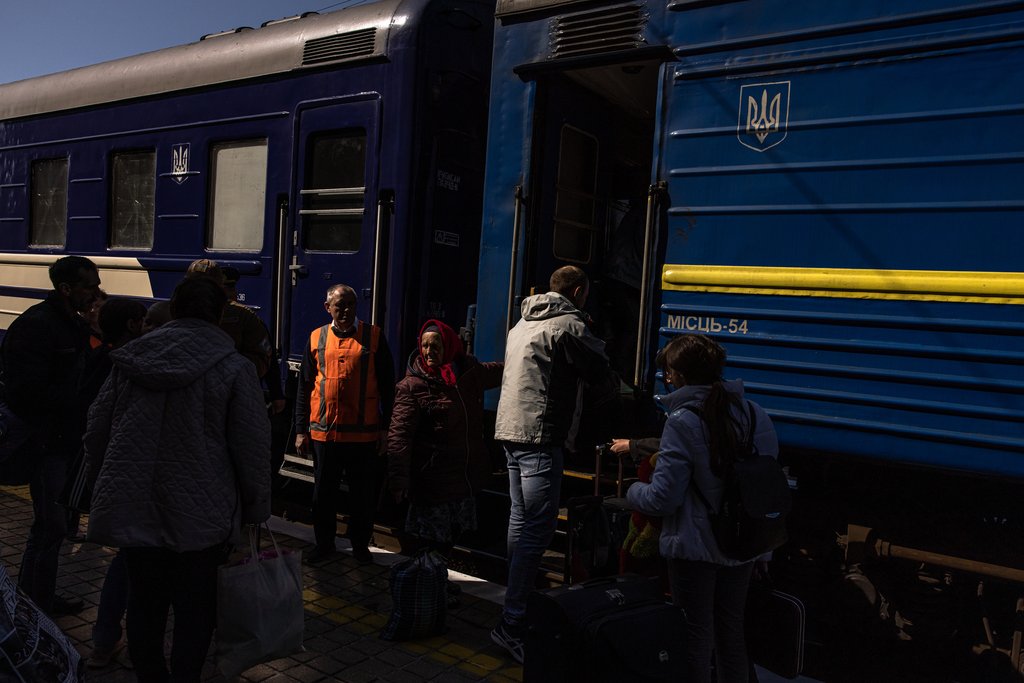Research - 02.12.2022 - 09:14
Encouraging civilians to evacuate during war: Evidence from Ukraine
Each year, tens of thousands of people die due to armed conflicts. Many deaths could be prevented by means of evacuation, moving citizens from risk areas to safe zones. Data from July 2022 gives insight into how communication strategies can save lives.

epa09932327 People board the evacuation train heading to the west of Ukraine, at the train station in Pokrovsk, Donetsk region, eastern Ukraine, 07 May 2022. After pulling back its army from near the capital Kyiv, Russia moved its main focus to the east of Ukraine, attacking it from different directions. On 24 February, Russian troops invaded Ukrainian territory starting a conflict that has provoked destruction and a humanitarian crisis. According to the United Nations High Commission for the Refugees (UNHCR) last report on the situation of Ukraine released on 05 May, more than 5.7 million refugees have fled Ukraine making this the fastest growing refugee crisis since World War II. EPA/ROMAN PILIPEY
Contrary to their best interests, many people refuse or are reluctant to leave areas of danger during an armed conflict. Finding a way to motivate these individuals to vacate could ultimately save lives.
Even though there is a significant research on evacuations and natural disasters, there are no discernable studies looking at war zones. Researchers at the University of St.Gallen and partner universities conducted a controlled survey in July 2022 using data coming from residential areas exposed to the Russian invasion of Ukraine and the evacuation messages they received.
This data is unique in that it evaluates potential communication strategies of regional governments and their effects on decisions of those experiencing the ongoing armed conflict. It also provides policymakers an insight into the effectiveness of messaging. Simply stated, more effective messaging can save lives and can be immediately applied in Ukraine and in the more than 50 armed conflicts taking place globally.
Findings:
- Data shows that providing a detailed plan about the specifics of the evacuation such as time and place of where the busses leave and having a system in place to reserve a seat on the bus, for example, seem to have the greatest effect on mobilizing citizens to leave a threatened area. Having governmental organizations or NGOs focus on this aspect of the evacuation message would have the best outcome.
- Focusing on the details of an evacuation plan has a positive effect on citizens overall. However it has a greater effect on women than it does on men.
- The framing of the message itself, such as focusing on the foreseen dangers to health and welfare when staying, on the deterioration of living conditions when staying, or on improving the situation for the defending soldiers when leaving, has little impact.
Offer concrete information about the options to leave
Conclusion: People in emergency situations need to be given precise and clear information about how they can be evacuated. Communication strategies for evacuation should therefore focus on the provision of such information.
The study can be found here.
Image: Keystone / People board the evacuation train heading to the west of Ukraine, at the train station in Pokrovsk, Donetsk region
More articles from the same category
This could also be of interest to you
Discover our special topics
















